Project Fair 2023
Project Fair took place in the Ayaslı Research Center of METU EEE on June 23rd, 2023.
Program
- 10.00–10.30 Opening Ceremony (Prof. Sevim Tan Lecture Hall – D231)
- 10.30-12.00 Exhibition
- 12.00-13.00 Lunch Break
- 13.00-15.00 Exhibition
- 15.00 Award Ceremony (Prof. Sevim Tan Lecture Hall – D231)
Below you can find information about the projects of all groups.
You can access detailed information about a specific group (their abstract, video, and poster) by clicking on the group’s name in the table below.
| DYENCO Training Buddy |
BIDEF Training Buddy |
Ankara Instruments Training Buddy |
Electrobenders Training Buddy |
BEGIN Training Buddy |
| BOLKAR Training Buddy |
MEANS ELECTRONICS The Copycat |
Manchester Untitled Aid for the Blind |
Innovative Rivals The Copycat |
HK Technologies Aid for the Blind |
| The Last Dance Training Buddy |
Innovage Gesture Mimicking Telepresence Robot |
Bench Robotics The Copycat |
Cross Products Training Buddy |
Boston Circuits Aid for the Blind |
| Kartezyen Corp. Aid for the Blind |
Alkan Robotics Shadow Fixing Intelligent Canopy |
Funtastics Aid for the Blind |
Disconnect Technology & Manufacturing The Copycat |
Old Fellas Training Buddy |
| Optima Technologies Shadow Fixing Intelligent Canopy |
Adaptive Infinity Aid for the Blind |
AntiaTech Training Buddy |
Techno5ive Training Buddy |
HighFive Training Buddy |
| Middle East Electrical Company The Copycat |
Beskar Dynamics The Copycat |
Los Seniales Hermanos The Copycat |
GETEF Aid for the Blind |
Shinobi-TECH The Copycat |
| Region of Divergence The Copycat |
SAVE Training Buddy |
Sundance Shadow Fixing Intelligent Canopy |
||
DYENCO
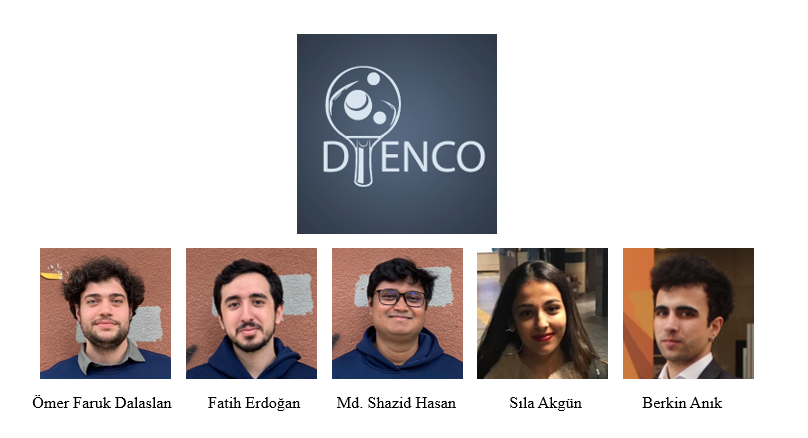
Supervisor: Ali Özgür Yılmaz
Project: Training Buddy
Abstract: The DYENCO Training Buddy is an advanced table tennis training robot that offers a range of features to enhance players’ skills in a precise and efficient manner. With its high-precision aiming system and successful hit detection, players can improve their accuracy and consistency. The robot also incorporates voice-commanding technology, allowing users to control its functions effortlessly. In addition to its performance capabilities, the Training Buddy is price efficient, making it accessible to players of all levels. It is also power efficient, ensuring long-lasting training sessions without excessive energy consumption. Furthermore, the Training Buddy is designed with environmental friendliness in mind, minimizing its environmental impact. Its portable design allows for easy transportation, making it a convenient training solution for players on the go. Overall, the DYENCO Training Buddy offers a comprehensive and innovative training experience for table tennis players, combining precision, efficiency, affordability, and portability.
BIDEF
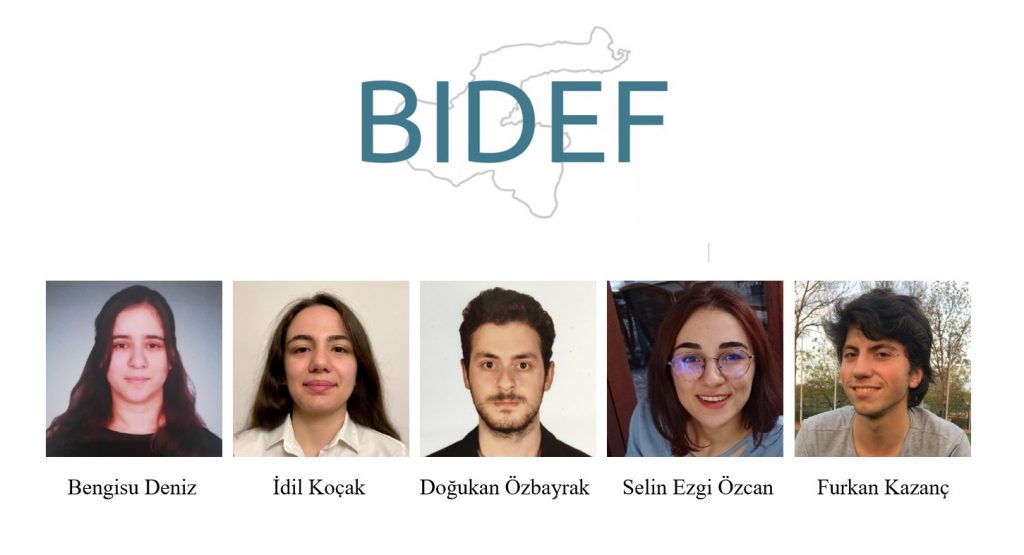
Supervisor: Elif Vural
Project: Training Buddy
Abstract: This project involves designing and implementing an interactive ping pong ball launcher to enhance table tennis skills. The launcher is expected to work with verbal commands and should be able to launch balls with varying swing speeds, serve frequencies, and launching angles and apply various spins to the balls. It also records player performance for sports analytics purposes. The goal is to provide a realistic and customizable training experience for table tennis players Our solution has four major subsystems: voice recognition & decision-making, ball launching, targeting, and success detection. Our solution uses a public voice recognition neural network to detect the user commands on an STM32 board. An Arduino board is used to interface all the peripheral sensors and motor drivers. Using two DC motors, we push the ball out of the barrel while implementing pan and tilt motions with stepper motors to target at desired locations on the table. The success of the player is determined by listening to the output of piezoelectric sensors mounted on the two sides of the table. Lastly, success data is kept and analyzed statistically.
Ankara Instruments
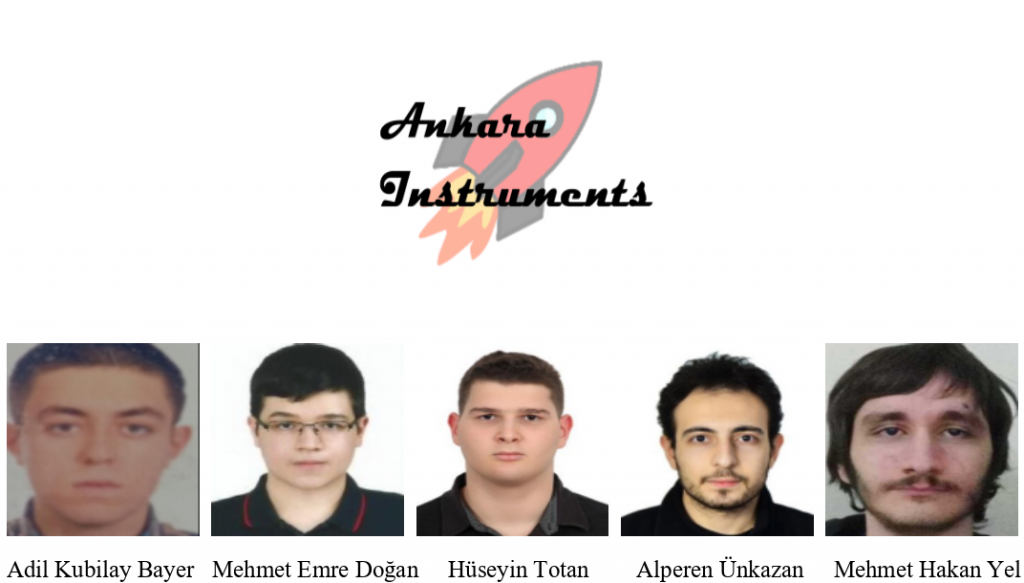
Supervisor: Ahmet Cemal Durgun
Project: Training Buddy
Abstract: PingLauncher400V is a table tennis ball launcher concept that aims to create an affordable and smart training buddy to help a variety of people improve their table tennis skills. We believe our product will propose a solution for novices and kids who struggle to find a practice partner to dive into the game with. Our device proposes different game modes to allow for constant skill improvement and entertainment. To further improve the device’s user experience we provide a voice recognition feature for the user to interact with the device remotely and a Graphical User Interface (GUI). We also provide an automatic point recording feature so that the need to keep track of the points is eliminated, and the user can just have fun without a headache.
Electrobenders

Supervisor: Serkan Sarıtaş
Project: Training Buddy
Abstract: Table tennis, a highly popular sport, involves two players, two rackets, and a ping pong ball. However, honing one’s skills can prove to be a challenge when practicing alone. Consequently, both beginners and individuals seeking self-improvement often require the guidance of an experienced trainer. Unfortunately, consistently finding an affordable trainer can be difficult. This creates a pressing need for an advanced ball-launching device that can rapidly and consistently fire balls, significantly enhancing a player’s learning rate without relying on another table tennis player. Fortunately, the ElectroBenders team has developed an innovative standalone smart device that meets this requirement. This cutting-edge ball-launching robot has been intricately designed to cater to players’ needs. Utilizing an image processing system, it can identify a player’s weaker and stronger sides and determine where to launch the next ball to facilitate improvement. With its wide range of game modes and intelligent shooting system, this product offers significant advantages over its competitors.
BEGIN

Supervisor: Ahmet Cemal Durgun
Project: Training Buddy
Abstract: Training Buddy is a robot designed to solve the problem of finding suitable competitors for table tennis players. In table tennis, practice training plays a vital role in achieving success. However, due to the unique skills and varying levels of proficiency among players, it can be challenging to find a compatible opponent. Training Buddy offers a technological solution to this issue.
BOLKAR
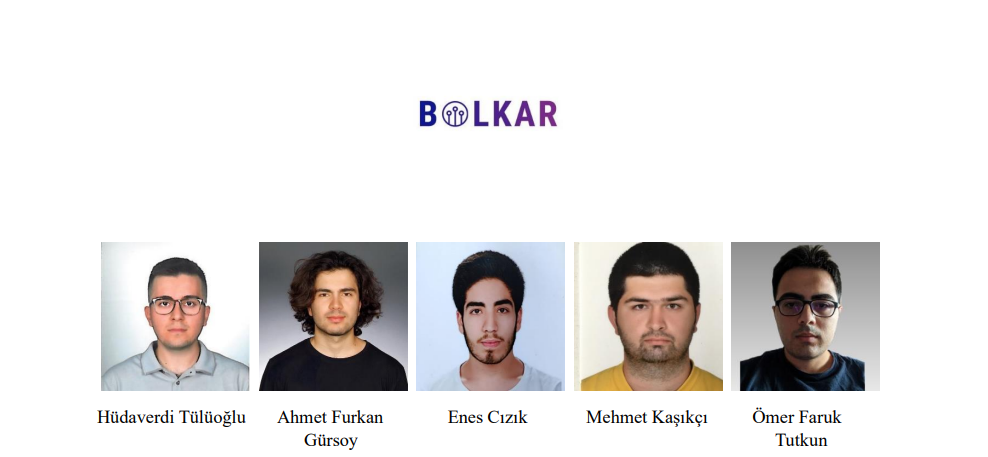
Supervisor: Ayşe Melda Yüksel Turgut
Project: Training Buddy
Abstract: Table tennis players need at least one player other than themselves to train. BOLKAR aims to solve this problem. Training buddy allows players to train and improve themselves. Using this device, players can improve their backhand and forehand strokes, measure how they react to incoming balls with backspin and topspin, and train against slow and fast incoming balls. It can perform all these functions with a voice command. Finally, on the screen of his phone, he can see how many points he has scored in the game he is playing.
MEANS ELECTRONICS
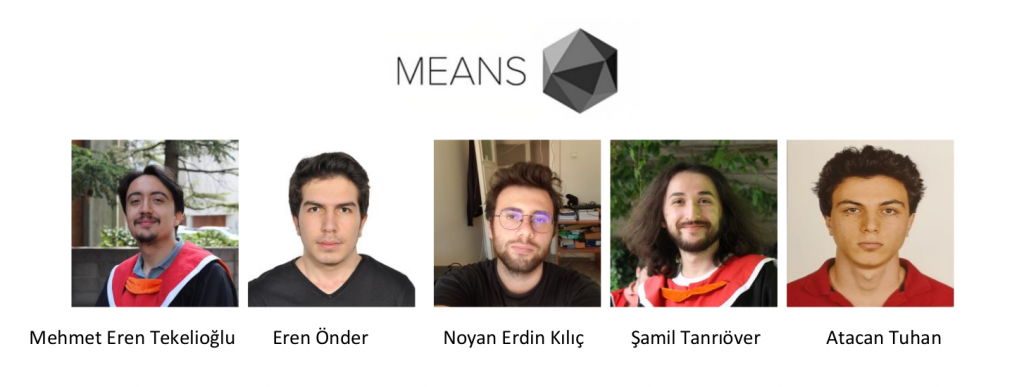
Supervisor: Serkan Sarıtaş
Project: The Copycat
Abstract: Presented by Means Electronics, The Copycat project includes two mobile autonomous car-like robots, and a graphical user interface for the users to interact with them. The project’s aim is to contribute to the advancements in synchronous movement, and to create a proof of concept design for demonstration of mimicking behavior of ground vehicles. Users are able to control the Master by giving it a navigation path via the user interface, and the simulation results, the speed profile which the robot will follow the given path, algorithmic limitations applied to the behavior of the robot because of physical restrictions are presented to the user before the behavior starts executing, hence giving a complete description of the expected operation of the robot to the user. The Agent operates completely autonomously, starting by locating the Master, approaching it and executing synchronous motion during the operation.
Manchester Untitled

Supervisor: Serkan Sarıtaş
Project: Aid for the Blind
Abstract: The Aid for the Blind Project aims to develop a wearable device that assists blind individuals in navigating cities safely by providing comprehensive environmental monitoring. The device consists of two main modules: the headset module and the walking stick module. The headset module utilizes image processing algorithms and AI models to detect and recognize various elements such as crosswalks, ring stop signs, and obstacles. It provides real-time audio feedback to the user, allowing them to navigate their surroundings safely. The walking stick module includes an ultrasonic sensor to detect obstacles and a set of buttons for user interaction.
Innovative Rivals
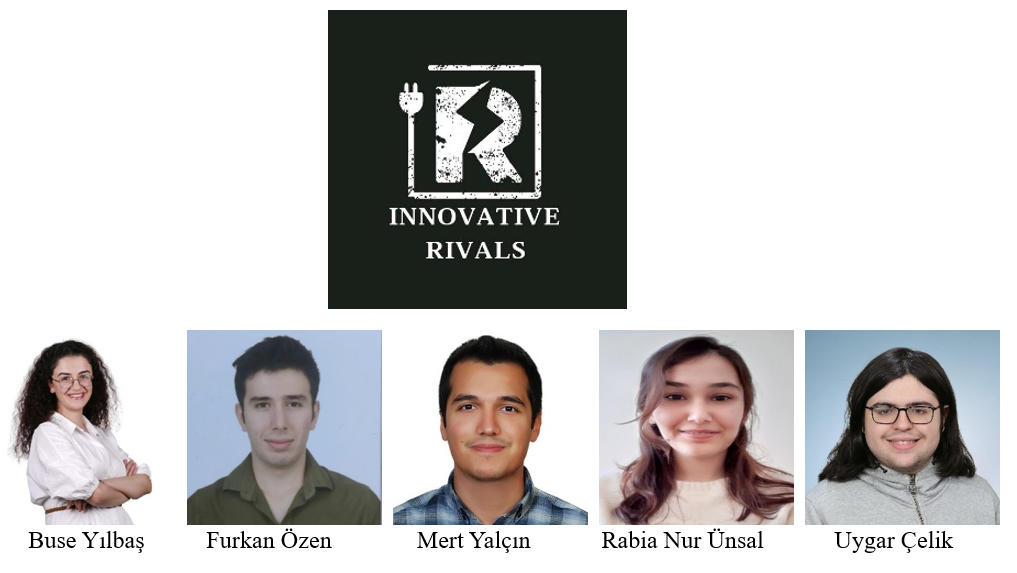
Supervisor: Aydan Erkmen
Project: The Copycat
Abstract: With the rapid advancement of technology, robotics has witnessed remarkable progress and innovation. One such development is the emergence of imitation robots, capable of mimicking human, animal, or object movements, leveraging the power of artificial intelligence. These robots prove to be invaluable in hazardous environments where human presence may be risky. Moreover, instead of relying on extensive coding for complex movements, the imitation feature offers a simpler alternative. As Innovative Rivals, we present the design of a Copycat robots, referred to as the Agent, which possesses the ability to synchronize its movements with the Master. The Agent detects the Master, approaches it at a designated distance, and subsequently mirrors its orientation and speed. Notably, the Agent operates independently without active communication with the Master. Through this project, we aim to demonstrate the efficacy of synchronized movement imitation in robotics, opening doors to safer and more efficient applications.
HK Technologies

Supervisor: Yeşim Serinağaoğlu Doğrusöz
Project: Aid for the Blind
Abstract: The mission of HK Technologies is to offer cutting-edge technological solutions that improve the lives of visually impaired people. The difficulties that blind persons encounter when attempting to freely navigate city streets are addressed in this project. We discovered the need for a solution to prevent accidents and enhance their general well-being by studying their everyday struggles. The suggested solution comprises audio support delivered through headphones and accessed via a mobile phone app. Users will be assisted in identifying and avoiding barriers like automobiles and traffic signals by this aural feedback. We intended to provide users with a variety of packages, each of which would include the mobile app, sensors, and a motherboard. Our product’s wearable design eliminates the need for conventional white canes, and the Aid4U smartphone app gives users a thorough understanding of their surroundings for safer navigation.
The Last Dance
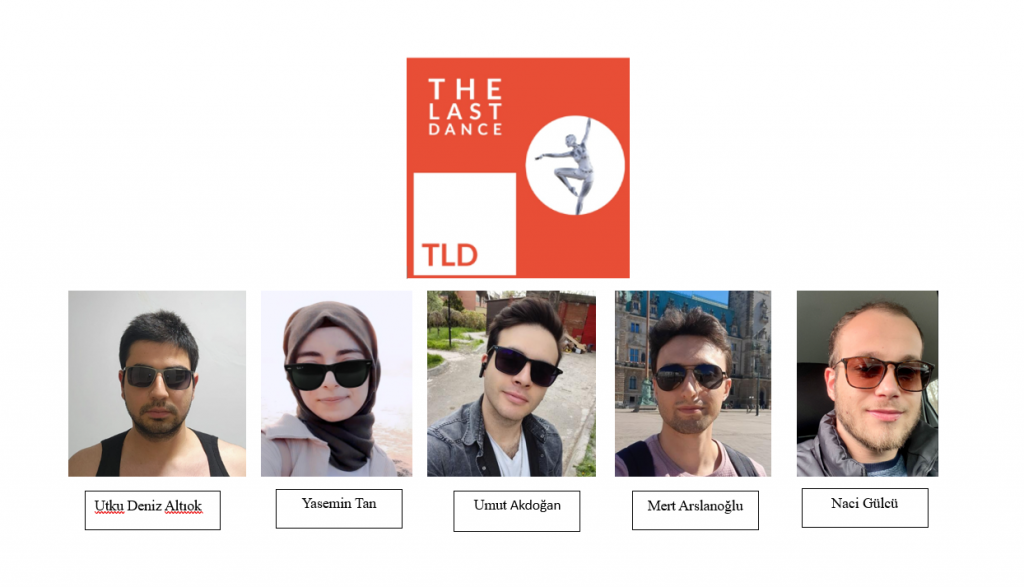
Supervisor: Serkan Sarıtaş
Project: Training Buddy
Abstract: The project introduces “Training Buddy,” an intelligent table tennis robot designed to cater to the training needs of players seeking a convenient and affordable solution. Utilizing DC motors, servo motors, microphones, and cameras, the robot can throw balls with varying speed, spin, and angle, responding to voice commands from the user. Through advanced signal processing and image processing techniques, it analyzes voice commands, detects successful ball landings, and adapts its behavior based on the user’s playstyle and skillset. The project prioritizes ethics and safety by securely storing data on the user’s computer and controlling ball speed to prevent harm. With a robust mechanical structure comprising 3D-printed and off-the-shelf components, Training Buddy offers enduring performance. By enabling individuals to train alone at home, the project addresses the challenges of finding training partners and fosters skill development with its accessible and enjoyable approach.
Innovage
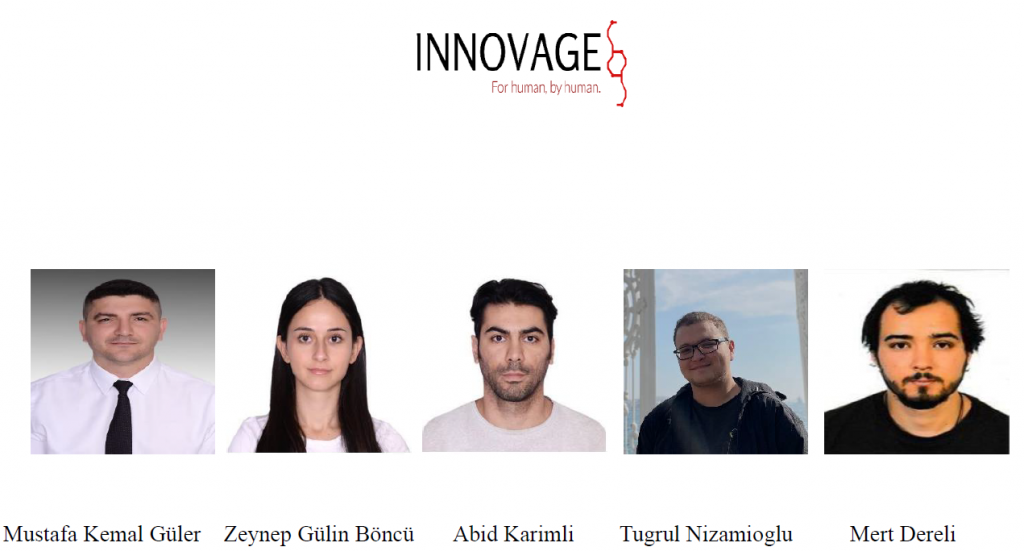
Supervisor: Elif Vural
Project: Gesture Mimicking Telepresence Robot
Abstract: Our project introduces a sophisticated, remote-controlled robotic arm with haptic feedback, designed for operations in hazardous or unreachable areas. Our system senses the user’s hand movements and mimics them. The robot is designed to replicate the user movements, while they write and draw on an imaginary plane in 3D space. Adequate haptic feedback is given to the user to have an enhanced sensation of pen-holding compliance. The system integrates eight key subsystems, each playing a unique role from capturing user movements, providing tactile feedback, managing joint angles, visual monitoring, to ensuring power supply and inter-subsystem communication. This multidisciplinary project significantly contributes to robotics and automation across various sectors, while advancing haptic feedback systems. Our solution offers a safer, more efficient method for operating in challenging environments. The comprehensive kit includes a state-of-the-art robotic arm, a high-definition web camera, a wearable feedback device, a Leap Motion Controller, a user manual, a power cable, and USB 2/3 hybrid cables.
Bench Robotics
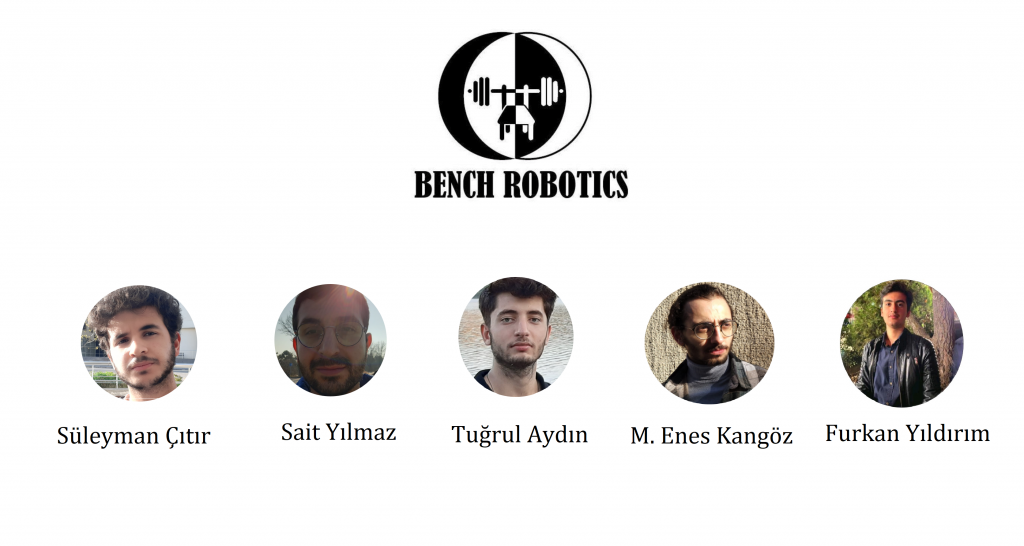
Supervisor: Ayşe Melda Yüksel Turgut
Project: The Copycat
Abstract: Bench Robotics offers a solution to all the mentioned problems and improves the state of current solutions with CopyCat. The CopyCat project is a multi-robot system (MRS) with a leader-follower formation. The CopyCat project aims to collectively accomplish tasks beyond a single robot’s capabilities and to achieve well-defined goals requiring synchronous implementation. CopyCat has the potential for a set of applications in military, emergency situations, simultaneous transportation, and delivery.
Cross Products
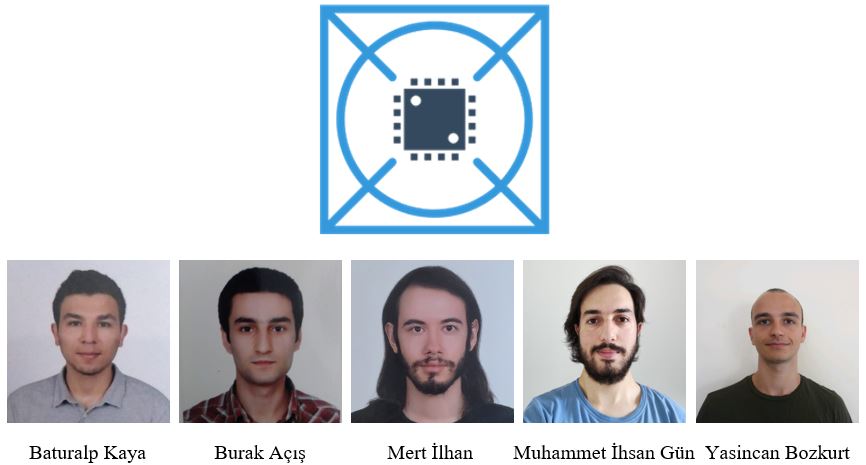
Supervisor: Serkan Sarıtaş
Project: Training Buddy
Abstract: Table tennis requires a great deal of practice to improve player performance and achieve success. As Cross Products, we introduce a cutting-edge robot designed to serve as a training buddy for table tennis players of all skill levels. The Rota has an advanced computer vision algorithm enables the device to measure the player’s success and learn their weaknesses/strengths. Through verbal commands and the GUI, the player can choose one of the five modes designed to satisfy their training needs: repetition practice, randomized repetition practice, sequence practice, randomized sequence practice, and game mode. Rota includes a 220V power adapter (or optionally a 1550mAh battery last for 1.5 hours), a user manual for setup and operation, a USB cable connecting the robot to a computer, and a software key for GUI installation. This product will be an effective, efficient, and affordable training tool for players across the full skill spectrum.
Boston Circuits
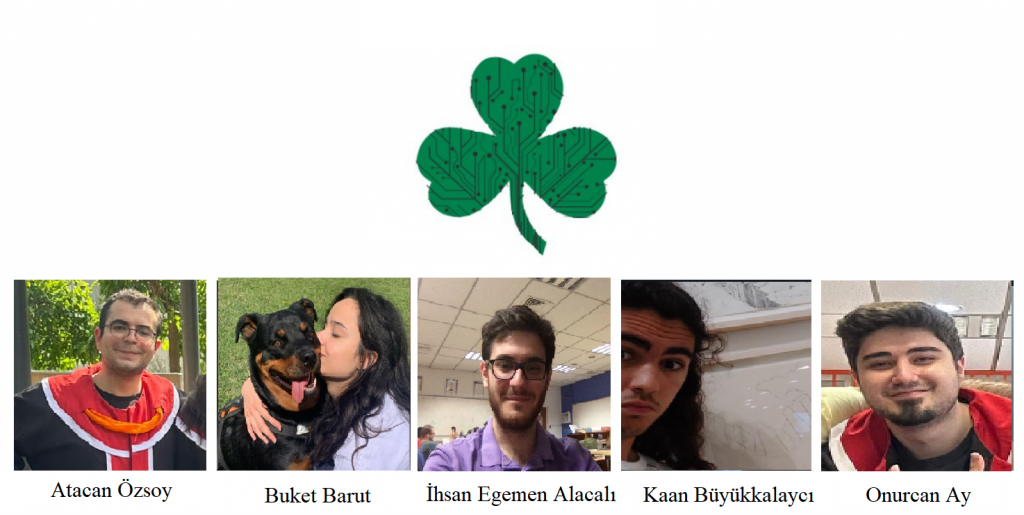
Supervisor: Aydan Erkmen
Project: Aid for the Blind
Abstract: The “Aid for the Blind” project is developing “VisioWear,” an innovative product to enhance navigation for visually impaired individuals, especially in traffic. VisioWear combines collision prevention and traffic guidance. The traffic guidance system uses a headset to provide auditory information in real-time about traffic elements like lights, crossings, signs, and vehicles. The collision prevention system includes an ultrasonic-sensor-equipped white cane to detect obstacles on the road. Initial tests yielded promising results, with further improvements planned through machine learning and system refinements. VisioWear aims for a lightweight design, long battery life, and durability. The project emphasizes customization, adaptability, and user-centric design. It has a budget of $200 and aims to be completed in the coming months. The development of VisioWear demonstrates the transformative potential of assistive technology in empowering visually impaired individuals, enhancing their independence and integration into society.
Kartezyen Corp.
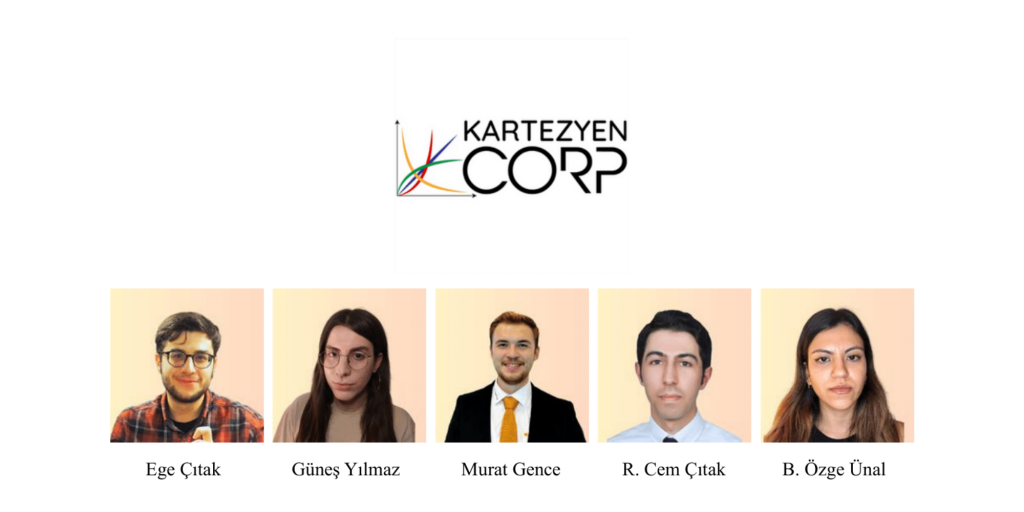
Supervisor: Yeşim Serinağaoğlu Doğrusöz
Project: Aid for the Blind
Abstract: The “Aid for the Blind” device is a comprehensive solution created to empower visually impaired individuals to navigate their surroundings with enhanced safety. The device amalgamates multiple components – a camera, sensor, audio system, primary controller, and power subsystem – to deliver real-time obstacle detection and image recognition functionalities. Underpinning this technology is a robust algorithm rooted in a state machine paradigm, leveraging the potent capabilities of the Raspberry Pi as its primary control unit. Moreover, this device employs Yolo v5, an advanced image recognition algorithm, to bolster its function. This state-of-the-art system is intended to significantly improve the quality of life for visually impaired people, making navigation in their environment more accessible and secure.
Alkan Robotics
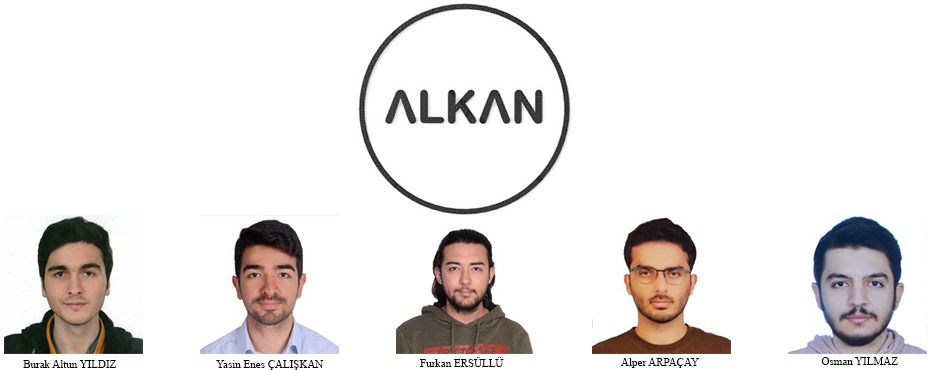
Supervisor: Elif Vural
Project: Shadow Fixing Intelligent Canopy
Abstract: Cano.py is a product designed to maintain the shadow within a pre-specified region by employing optimization algorithms to control the canopy in response to changes in the light source position. In areas where a consistent shadow is desired, our product can detect the position of the sun and reposition the canopy to an optimal location using motors on the poles. To enhance accuracy, we incorporate a feedback system with a camera that utilizes image processing techniques.
Funtastics
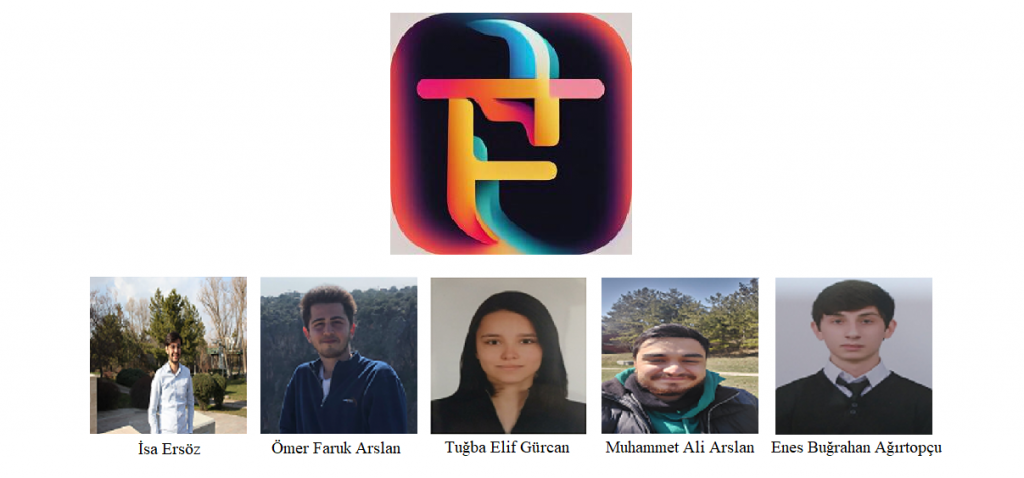
Supervisor: Ali Özgür Yılmaz
Project: Aid for the Blind
Abstract: The Aid for the Blind project aims to improve the safety of visually impaired individuals when navigating traffic. Developed by our company “Funtastics,” this project offers a device that alerts users to potential dangers such as objects on the sidewalk or vehicles on the road. The device also recognizes pedestrian-relevant traffic signs and crossings. Designed with comfort, power efficiency, and lightness in mind, it utilizes sensors and a camera to detect obstacles and monitor traffic conditions. Advanced deep learning algorithms process data from these sensors, enabling users to benefit from cutting-edge smart technology. Our executive team consists of five talented engineering students with expertise in power electronics, computer science, communications, and control engineering. With their dedication, we aim to provide a wearable mobile device and user manual, expecting to make a significant impact on visually impaired communities
Disconnect Technology & Manufacturing

Supervisor: Yeşim Serinağaoğlu Doğrusöz
Project: The Copycat
Abstract: With new technologies and robotics, the population of humanity has increased more than 5.5 billion over a century. In order to deal with this overpopulation problem and keep up with the demand of the public, robots should be able to manage working in unison. In the copycat project, the aim is to make robots that can work together and travel the path given in the graphical user interface by the user. As Disconnect Technology&Manufacturing, we’ve developed a robust system with 3 subsystems to manage this operation which are: a graphical user interface, movement control of the master and the agent, and the movement detection system.
Old fellas
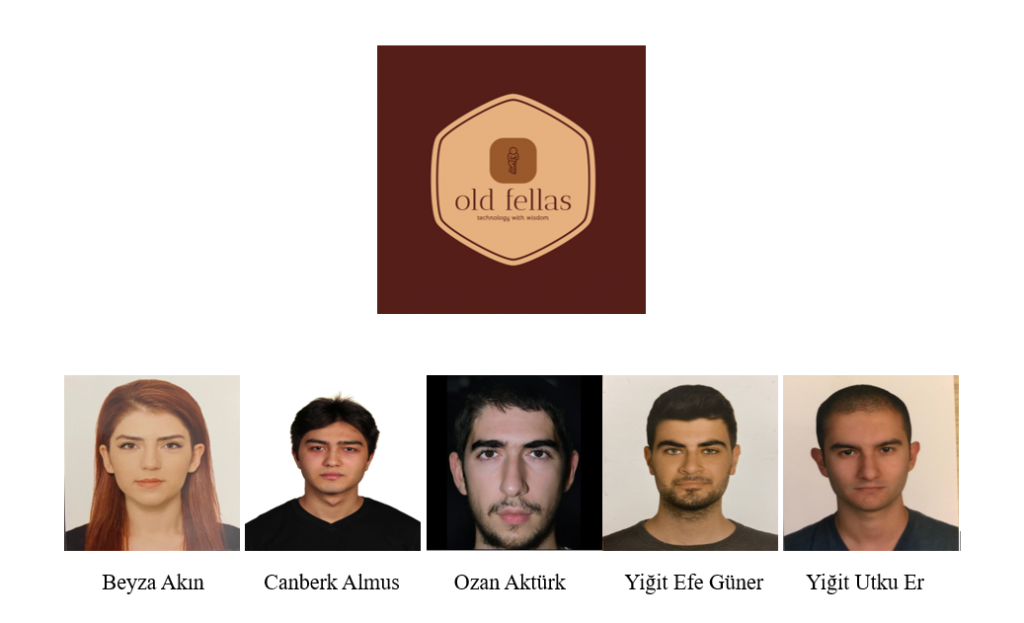
Supervisor: Aydan Erkmen
Project: Training Buddy
Abstract: This project implements the ultimate Training Buddy of the table tennis player. The core concept of the design includes a ball launching system for the player to counter them. Being able to adjust the swing parameters of horizontal swing angle, speed, ball rotation and shooting frequency, this device can simulate an actual player performing a serve. To control these parameters, the user can interact with the system via voice commands. During the game session, player swings are recorded via a singular camera. The obtained data is processed, and the number of successful hits is obtained so that the player can get feedback. The user can also utilize prebuilt game modes where serving parameters are adjusted to create realistic game scenarios. Custom designed game modes are also possible to be utilized where the said parameters can be varied in a way the user can control.
Optima Technologies

Supervisor: Ayşe Melda Yüksel Turgut
Project: Shadow Fixing Intelligent Canopy
Abstract: The Shadow Fixing Intelligent Canopy Project is a novel solution to the problem of sunburn and discomfort caused by the constantly shifting position of the sun. Optima Technologies has developed a canopy system that uses cameras to detect the position of the shadow and determine the required position to protect individuals from sunlight. The system is composed of three main subsystems: Firstly, the shadow sensing system utilizes the cameras to detect the position of the shadow and with the help of a processor, the required position is determined and sent through the serial interface to the microcontroller as movement commands. Secondly, the electronic subsystem aims to build a connection between the shadow sensing and the mechanical subsystems. It controls the actuators and realizes the motion which is specified by the processor. Finally, the mechanical system specifies the kinematics design, structural design, and the production of the design.
Adaptive Infinity

Supervisor: Ahmet Cemal Durgun
Project: Aid for the Blind
Abstract: Visually impaired individuals encounter challenges in perceiving visual cues within congested traffic environments. As ADAPTIVE INFINITY, we aim to develop a wearable device consisting of a smart bag and a smart cane, providing real-time feedback on the surroundings. By incorporating advanced image processing and design features, our product empowers users to navigate crowded traffic environments with increased confidence and safety. It analyzes visual information including traffic signs, cars, traffic lights, and pedestrian crossings, and relays this information through auditory cues and vibration feedback. The wearable device is designed to be reliable, lightweight, compact, and energy-efficient, ensuring usability and comfort. Through bridging the gap between visual cues and sensory capabilities, our product enhances the mobility and safety of visually impaired individuals in traffic scenarios.
AntiaTech
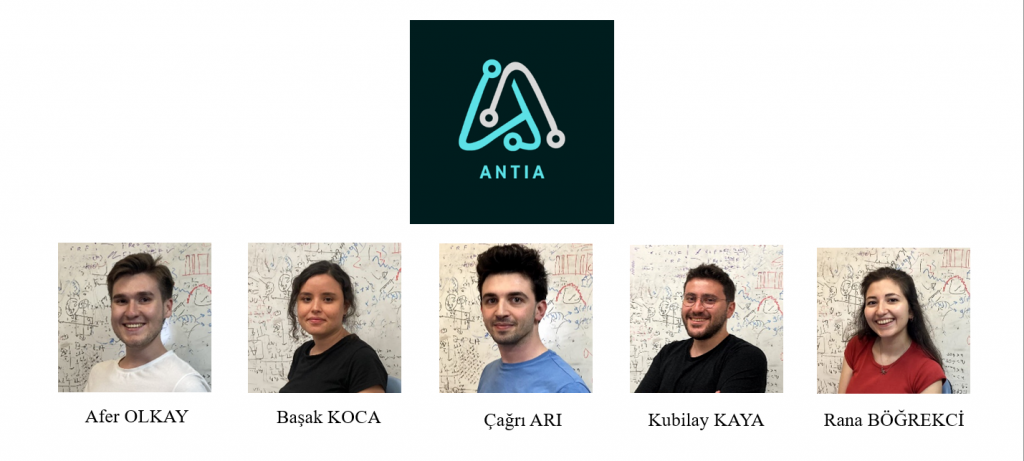
Supervisor: Elif Tuğçe Ceran Aslan
Project: Training Buddy
Abstract: Any sport requires practice if you want to improve your abilities. But also, it is important to practice efficiently: one does not become a weight champion by lifting pillows constantly nor starts training by lifting hundreds of kilos. Table tennis is no exception, although it is not always possible to train with opponents at the same skill level as you. As AntiaTech, we aim to remove this problem and make it possible for our customers to reach their potential as soon as possible with our product TrainingBuddy. TrainingBuddy allows you to set its difficulty level by giving you control of its spin, speed adjustment and creating ball routines to make sure you can prepare for any scenario! It will show you where your weakness resides and will be ready for whenever you are ready.
Techno5ive

Supervisor: Yeşim Serinağaoğlu Doğrusöz
Project: Training Buddy
Abstract: Table Tennis is a sport played between 2 players. It is a sport that requires constant practice and experience against new opponents. Often, players get tired of practicing with a player of a similar skill set or are unable to find a suitable partner. Introducing Training Buddy – a ping-pong robot designed for an adjustable skill set and various game modes for ultimate practice. Our Team at Techno5ive devised a novel and economical robot that can help you train in various spinsters, launch angles, ball speeds and serve frequency configurations, all via Voice Commands! This portable device even has a mode that analyzes your weaknesses and improves them.
HighFive
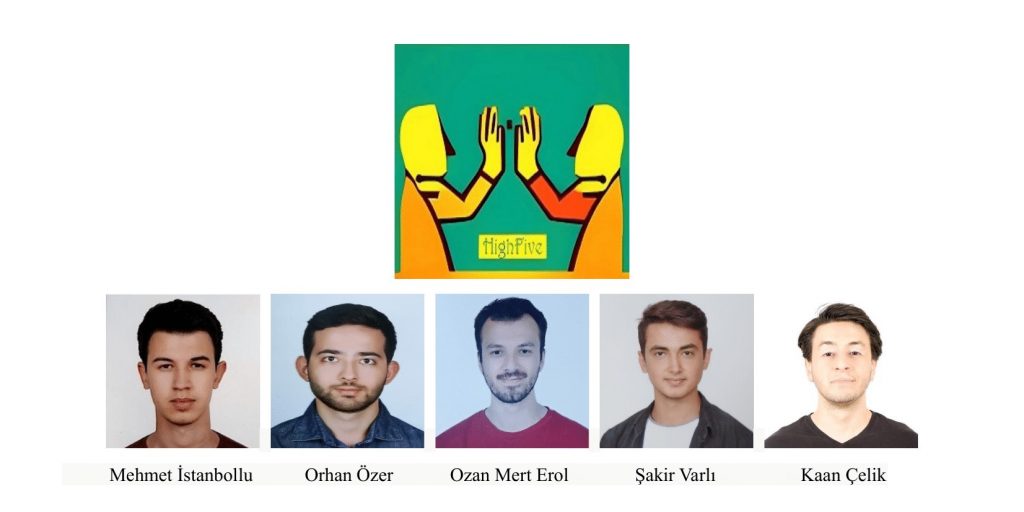
Supervisor: Ali Özgür Yılmaz
Project: Training Buddy
Abstract: Success in every sport requires efficient training, and the key to achieving that strength lies in improving weaknesses while maintaining strengths. It’s challenging to identify weaknesses and develop robust strategies to address them without the help of an assistant. To address this issue, our company has developed a revolutionary solution called “Training Buddy.” This innovative device empowers athletes to enhance their skills by providing them with the ability to practice various ball-related scenarios, such as altering modes, speeds, frequencies, angles, and directions, all through simple voice commands. The Training Buddy analyzes training sessions and identifies features for improvement, making it a valuable tool for both players and coaches.
Middle East Electrical Company
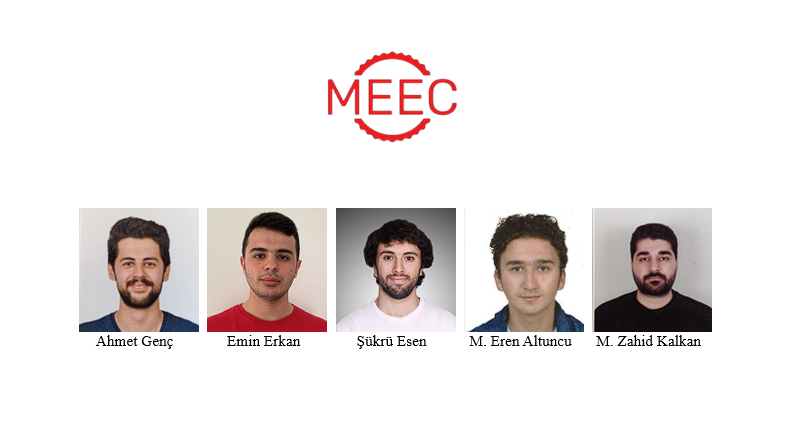
Supervisor: Ahmet Cemal Durgun
Project: The Copycat
Abstract: Autonomous Vehicles are one of the most popular subjects in the industry. Their capability improves day by day, but it also requires much more data to handle it. The trajectory should be known, the obstacles should be noticed, the velocity should be adjusted continuously, and so on. Middle East Electric Company offers a smart vehicle duo promising autonomy, design simplicity, and energy efficiency. The master and the agent duo use much fewer sensors than their counterparts to operate various trajectory and speed profiles. While the master robots are controlled by the user, the agent robots mimic the track and speed of the master, requiring any location data.
Beskar Dynamics
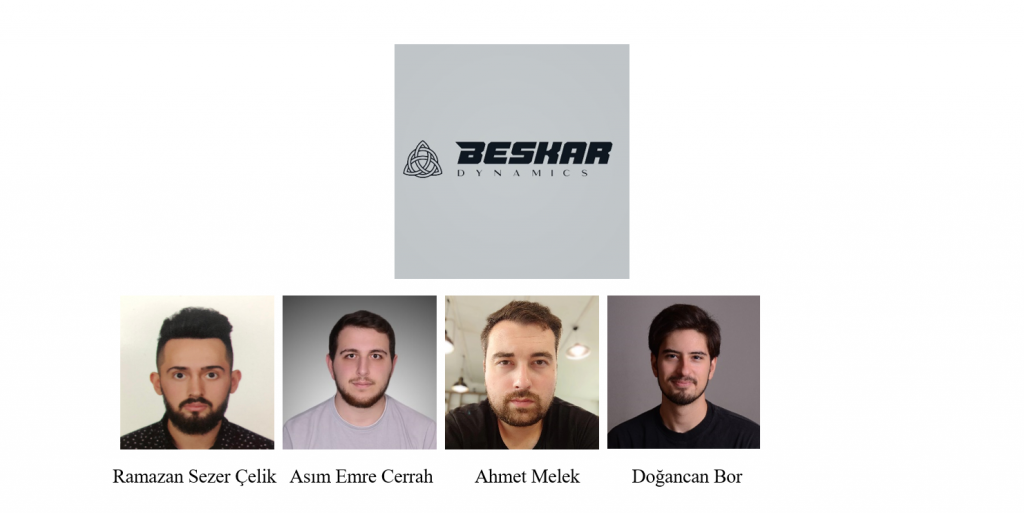
Supervisor: Ayşe Melda Yüksel Turgut
Project: The Copycat
Abstract: The Copycat project aims to develop a specialized agent capable of mimicking and synchronizing its motion with a master entity. By studying synchronized behavior in different domains, including the natural world and robotics, the project seeks to bridge the gap between living organisms and robotic systems. Through meticulous research, the project intends to create a controlled environment where the copycat agent can synchronize its motion with a master entity. This has implications for enhancing cooperation and coordination among multiple robots, leading to improved performance. Ultimately, the Copycat project aims to contribute to advancements in bio-inspired robotics, human-robot interaction, and multi-agent systems, by establishing connections between living organisms and artificial systems.
Los Seniales Hermanos
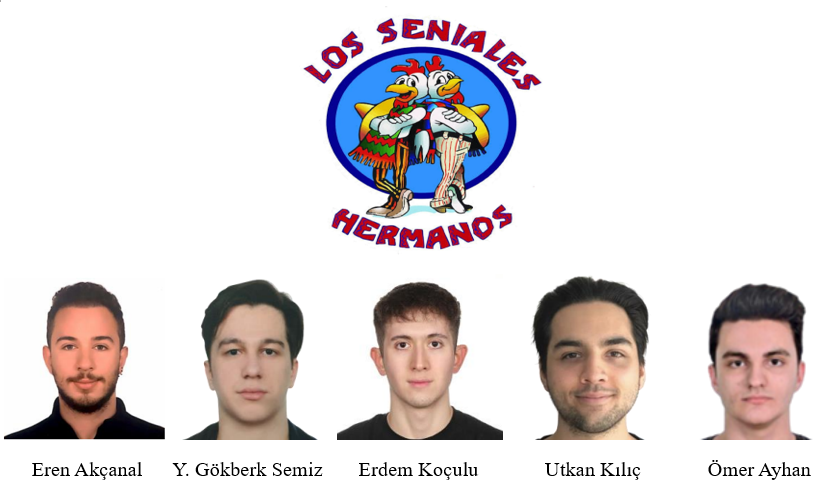
Supervisor: Elif Tuğçe Ceran Aslan
Project: The Copycat
Abstract: This abstract presents a project titled “El Gato Imitador,” which aims to develop a system for real-time communication and coordination between autonomous vehicles. The project’s goal is to enable one autonomous car to mimic the movement of another without direct communication. By achieving this, the project, also known as “Copycat,” seeks to revolutionize transportation and logistics. The project team, consisting of skilled senior electrical and electronics engineering students from Los Seniales Hermanos, plans to leverage modern technologies such as image processing and artificial intelligence to empower an agent robot to recognize and imitate the movements of a master robot. Special markers will be implemented on the master robot, and state-of-the-art AI algorithms will ensure the accuracy of the system. A 360° rotatable camera will enable the agent robot to maintain a lock on the master robot. The estimated cost of the project is $200, with a projected timeline of 6 months for completion. The team is confident that the Copycat system will be a remarkable technical achievement and inspire further developments in synchronized motion between robots. The abstract concludes by inviting others to join them on this exciting journey.
GETEF

Supervisor: Elif Tuğçe Ceran Aslan
Project: Aid for the Blind
Abstract: We designed a smart wearable gadget to help blind people move around in cities safely. Our product uses number of sensors and various artificial intelligence architectures to spot crosswalks, traffic lights, and cars. GETEF’s product ensures their users to cross the roads safely. Furthermore, it detects the obstacles in the road, and provides a safe path to the user. Our product is lightweight, easy to wear, and doesn’t have any wires that would discomfort the person who is wearing it. Moreover, it is stingy in power consumption. We aim to ease the burden of the impaired people’s lives with our product.
Shinobi-TECH
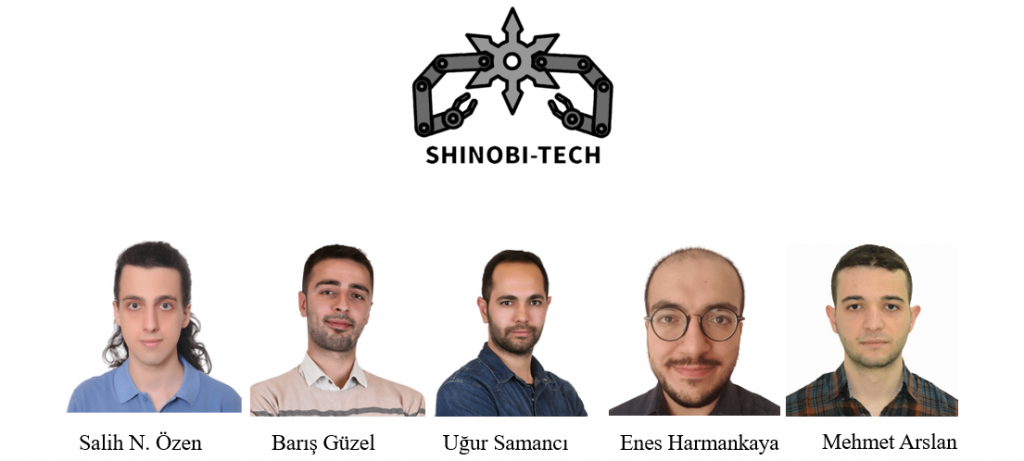
Supervisor: Elif Tuğçe Ceran Aslan
Project: The Copycat
Abstract: Shinobi-TECH has developed a movement-mimicking wheeled mobile robot consisting of a Master and an Agent. This project addresses the increasing demand for autonomous mobile robots in industries like healthcare, logistics, defense, and manufacturing. The goal is to create an agent robot that can replicate the movements of another robot, enabling synchronized motion even without wireless communication. By utilizing advanced camera and sensor technologies, along with sophisticated algorithms, the Agent robot can replicate movements of the Master robot even without wireless communication. The impact of this robot’s development is far-reaching, with potential benefits in manufacturing, where it can operate machinery safely and efficiently by mimicking human or robotic actions, and in logistics, where it can learn delivery routes by following trucks for future optimized deliveries. Overall, Shinobi-TECH aims to make a valuable contribution to the field of autonomous mobile robotics, enhancing efficiency, safety, and cost-effectiveness in industries.
Region of Divergence

Supervisor: Ali Özgür Yılmaz
Project: The Copycat
Abstract: The Copycat project introduces a non-communicative system composed of a master robot and an agent. Instead of relying on direct or indirect communication, the agent analyzes the movements of the master robot using its camera, while the master robot is controlled by a ground station. The project incorporates various subsystems to ensure smooth operation. The GUI subsystem provides a user interface for issuing commands to the master robot, the trajectory generation submodule converts user-drawn paths into coordinate and speed values, and the communication subsystem transfers these commands to the master robot. Motion control utilizes sensors, encoders, and motor drivers to enable precise robot movements. The target tracking subsystem allows the agent to mimic the behaviors of the master robot based on visual information. The casing subsystem provides a suitable chassis for both robots. By eliminating the need for direct communication, the Copycat project offers a flexible and innovative solution for swarm systems, with potential applications in industrial output enhancement and global relief efforts..
SAVE

Supervisor: Elif Vural
Project: Training Buddy
Abstract: Company SAVE was founded by four shareholders in order to provide creative engineering design solutions. As Company SAVE, in this project our aim is to design a ball-throwing robot for table tennis players. This robot will not only throw the ball but will also throw it with a desired spin to the desired places, with a desired frequency, at a desired speed. Our robot will understand the commands via a voice detection system. After throwing the ball our robot will detect whether the player received the ball successfully via image detection and keep statistics.
Sundance

Supervisor: Aydan Erkmen
Project: Shadow Fixing Intelligent Canopy
Abstract: _ShadowSynch is a remarkable solution that guarantees a comfortable outdoor experience on sunny days. it automatically adjusts itself to maintain constant shadow coverage, ensuring uninterrupted sunlight protection. Its aesthetic, compact, and self-supporting structure makes it a versatile addition to a wide range of public spaces. From parks and squares to beaches and any desired open areas, the _ShadowSynch offers reliable sunlight protection while seamlessly blending into the surroundings.

